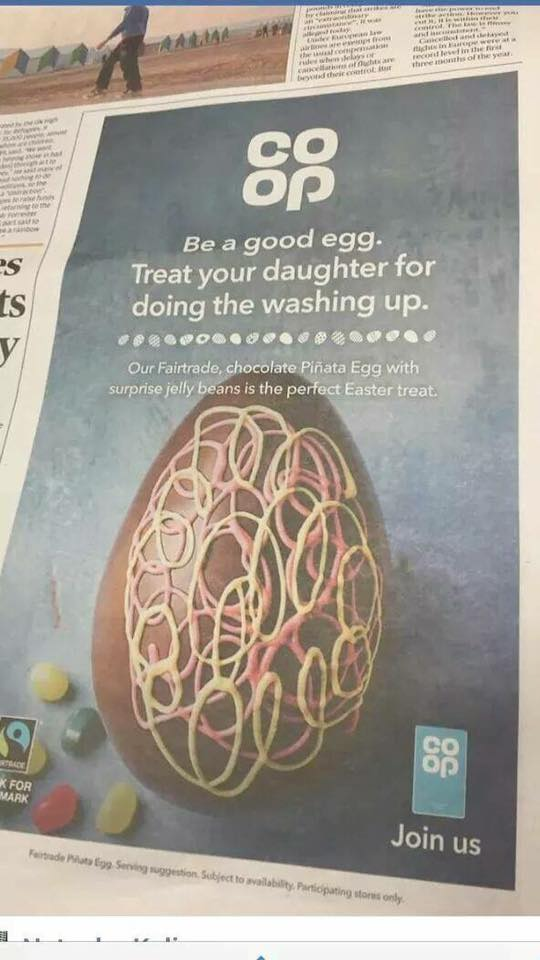Marketing has always been a powerful tool for brands to harness. From De Beer's groundbreaking diamond campaign to Coca-Cola's defining Christmas ads, using marketing to advocate your brand is nothing new.
However, even the best laid plans can go wrong and, for marketers, it's often that someone has completely misjudged the target audience.
When marketing messages go wrong
It's not always a massive disaster, most of the time it's just about not thinking how a certain campaign or message could be interpreted. Supermarket Co-op felt severe backlash after it ran a newspaper ad telling parents to buy their daughters a Fairtrade Easter egg for "doing the washing up". For the family-friendly UK chain who has always marketed itself as being 'for the people', this sexist message was at odds with the brand they thought they knew. It also undermined one of the key principles of the Fairtrade movement which is gender equality.
Obviously this wasn't the message Co-op wanted but in something as simple as a newspaper ad, there really is nowhere to hide.
US-based pancake diner IHOP suffered a similar PR disaster after it tweeted out a misogynistic message. The family brand had been trying to show an edgy side with its marketing, with previous tweets proclaiming that pancakes were "on fleek" but the change was so radical and unexplained that it left many of its target audience confused.
IHOP, which had previously done Dr Seuss-inspired commercials, completely missed the mark with its risqué tweet and it was made worse because it was so off-message for the brand.
In both of these examples, the marketing backfired because they weren't staying true to the image they had previously created with their target audience. These are relatively minor and companies are able to recover without much financial or reputational damage. However, sometimes brands are so confident that their leap of faith is going to fit with their target audience that they design an entire product around it.
One of the most memorable of these was Facebook Home. The social media giant, which invests billion into marketing, got it badly wrong with this product, which took over a user's smartphone home screen. It forgot its members, which are predominantly millennials, want more control, not less, over what they see every day. This caused take-up to be virtually non-existent and even when the price was reduced from $99 to $0.99, it still didn't take off. Just months after it launched, Facebook sacked it.
Another giant that took a huge fall was Google. Google Glass promised to revolutionize wearable technology and people who wanted to be at the forefront rushed out to buy it. However, Google forgot one of the most important things about the target audience of its tech; they need to look cool. Wearers of Google Glass looked downright ridiculous and it never caught on, leaving the search engine giant nowhere to go but back to the drawing board.
Making sure your marketing hits the mark
Branding that stands the test of time relies on a strong understanding of your target audience but also product research to determine how new releases will meet a true need of theirs.
A key part of knowing your target audience is understanding that people now more and more want brands that reflect their own ethics, ideals and even political stance. Uber's various PR disasters, including multiple sexual harassment scandals and refusing to join a taxi strike in the wake of the Muslim travel ban, has caused many of its users to turn to its direct competitor Lyft.
Understanding your target audience is much more about aligning your branding to consumers, rather than designing marketing that showcases a single product or service. Without all of these, the best marketing in the world will still deliver poor results and let you and your consumers down.
Access the latest business knowledge in Marketing
Get Access









Comments
Join the conversation...